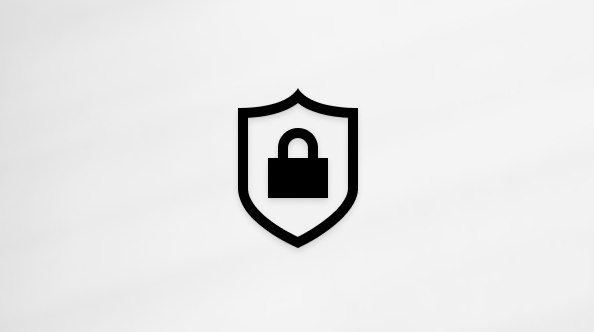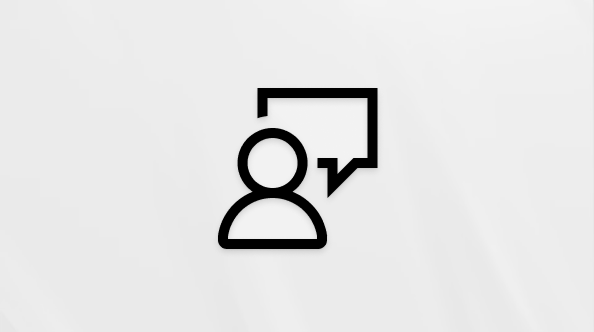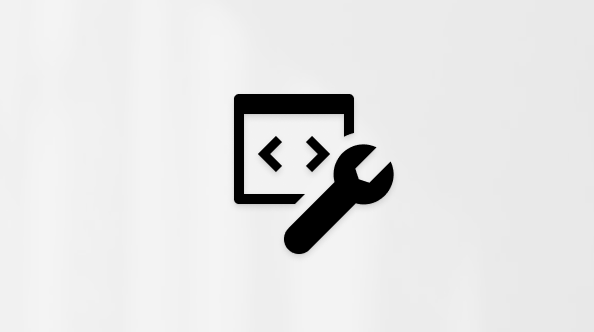Note: The availability of the features described in this document depends on your license and the configuration of your system. For more information, contact your administrator.
To open the Settings menu in Microsoft Dragon Copilot and customize your settings, select the settings icon on the upper right. Here you can do the following:
Configure the ambient recording language
In addition to US English, Dragon Copilot can also understand Spanish when it listens to your patient conversation.
To record a conversation conducted entirely or partly in Spanish, select the settings icon on the upper right, go to Ambient recording language and select Spanish (United States) from the drop-down list. The Spanish recording icon
Important: The recording language remains set to Spanish until you manually switch it back to English. To avoid inaccuracies, switch the recording language back to English for conversations primarily held in English, and use the Spanish setting only for conversations conducted in Spanish.
Auto-style your notes
You can configure Dragon Copilot to automatically apply your style preferences to all notes the AI generates for you. To do so, select the settings icon on the upper right and turn on Auto-style. The same setting is available under Style & format > Style.
Select Configure style if you haven't configured your style preferences yet or want to review your settings; this will take you directly to the style settings.
Tip: To apply your style preferences only to the current note but not automatically to all future notes, select Apply my style on the Timeline tab or at the bottom of any tab, or say Dragon apply my style.
Configure your microphone
Note: These settings are not available in Dragon Copilot mobile.
Select a microphone
By default, Dragon Copilot uses the microphone configured in your system or browser settings for dictation and ambient recording. To configure which microphone Dragon Copilot should use, select the microphone icon
Dragon Copilot remembers your preference for the Dragon Copilot version you're working with (for example, web or desktop) and will use the same microphone the next time you sign in. If your preferred microphone isn't available, it uses the microphone configured in your system or browser settings.
To enable the buttons on the selected microphone, turn on Enable buttons. This option is also available on a banner at the top of the app when you connect a PowerMic or SpeechMike device and button support is currently disabled. If Dragon Copilot and Dragon Medical One are running at the same time and you're using a PowerMic or SpeechMike to dictate in Dragon Copilot, you receive a warning about potential microphone conflicts. To learn how to act on this warning, see: Troubleshooting.
Remarks
-
If you switch microphones during recording, your current recording stops and you must manually restart recording.
-
If your preferred microphone (the one you previously selected from the list of available microphones) is detected while you're recording using another microphone, Dragon Copilot asks if you want to stop your current recording and switch microphones immediately or if you want to finish your current recording and switch automatically for the next recording.
-
If no microphone is connected, the microphone icon on the upper right indicates that:
Configure microphone buttons
To speed up your workflow, you can use the buttons on your microphone to trigger certain actions in Dragon Copilot. To configure which actions are assigned to the buttons on your microphone, select the settings icon on the upper right and select Microphone buttons.
Buttons are configurable for the following devices:
-
Nuance PowerMic III
-
Nuance PowerMic 4
-
Philips SpeechMike
Proceed as follows:
-
Select the microphone you want to configure the buttons for.
-
Press a button on your microphone to automatically navigate to the corresponding button in the Button actions section (or manually navigate to a button in the Button actions section) and select an action from the drop-down list. If you select Press hotkey, enter the keyboard shortcut you want to assign to the button.
To revert the button actions to the settings configured by your administrator, select Reset to default at the bottom right.
Configure general settings
To configure general settings, select the settings icon on the upper right and select General . Here you can do the following:
-
Check your Dragon Copilot version number in the About section.
-
Dragon Copilot mobile only: Turn on Keep screen on while recording if you want your mobile phone's screen to remain active while you're recording. This is disabled by default; if you enable it, be aware that this will affect battery life.
-
Change the appearance of Dragon Copilot: Select Appearance and then your preferred Theme (Light or Dark). The selected theme is applied to the current platform only; for example, if you select Dark while working in Dragon Copilot mobile, the dark theme is used in the mobile app but not in Dragon Copilot embedded, desktop or web.
-
Dragon Copilot desktop only: Configure how Dragon Copilot behaves when you try to dictate in an unsupported environment.
Keyboard shortcuts
Note: This setting is not available in Dragon Copilot mobile.
To assign keyboard shortcuts to frequently used actions in Dragon Copilot, select the settings icon on the upper right and select General > Keyboard shortcuts. The fields are prefilled with the default keyboard shortcuts.
To assign a custom keyboard shortcut to an action, select the field next to the action you want to configure and press the key combination you want to assign.
The following keyboard shortcuts are supported:
-
Single keys: ESC or F1-F10
-
A combination of keys: CTRL/CMD and/or ALT/OPTION, with or without SHIFT, plus SPACE, A-Z, 0-9, and/or the symbols /-+[]
To reset a custom keyboard shortcut to default, delete your shortcut and the default shortcut will reappear. To reset all custom keyboard shortcuts to default, select Reset to default at the bottom.
Remarks
-
Some keyboard shortcuts that are already used by your browser or your operating system can't be assigned to actions in Dragon Copilot. For example, pressing CTRL and T doesn't create the keyboard shortcut CTRL + T but opens a new browser tab instead.
-
If you're working with Dragon Copilot web or embedded, Dragon Copilot must have the window focus when you press a keyboard shortcut or it won't be executed.
-
If you're working with the Dragon Copilot desktop app, the following keyboard shortcuts work regardless of whether Dragon Copilot has the window focus: ambient mic start/stop, dictation mic start/stop, go to next field, go to previous field, minimize app, maximize app. To learn what to do if they don't work with the window focus outside of Dragon Copilot, see: Troubleshooting.
Text field delimiters
To configure the delimiters for fields in your texts that you can navigate to and edit via voice, select the settings icon on the upper right and select General > Text field delimiters . Enter a maximum of 5 characters that mark the start and end of the field, respectively; the start and end delimiters must not be identical. The default delimiters are square brackets, [ and ].
Dragon Copilot desktop only: Unsupported environments
To configure how Dragon Copilot behaves when you try to dictate in an unsupported environment, for example an EHR that Dragon Copilot doesn't fully support, select the settings icon on the upper right and select General > Unsupported environments.
You can choose between the following options:
-
Add text to dictation clipboard (default setting): Dragon Copilot writes the dictated text in the Dictation clipboard session as a new memo. This session is permanently pinned to the top of your session list; you can copy and transfer the text to your EHR. The dictation clipboard supports the full range of functionality related to dictating text and editing it via voice.
-
Use basic dictation : Dragon Copilot writes the dictated text in the unsupported environment you've placed your cursor in. Only basic dictation functionality is available; navigating, editing and formatting text via voice is not possible.
Configure your style & format
Dragon Copilot enables you to tailor the content and style of your AI-generated notes to be in line with your personal preferences and your organization's requirements.
To configure what your AI-generated notes should look like in terms of writing style, formatting, etc., select the settings icon on the upper right and select Style & format > Style. Here you can configure general settings for the whole note as well as settings for individual note sections.
To configure the content and headings of your note sections, select the settings icon on the upper right and select Style & format > Sections. These settings are always active, regardless of whether you've applied your style (manually or automatically).
Apply your style:
-
To apply your style preferences only to the current note, select Apply my style on the Timeline tab or at the bottom of every tab, or say Dragon apply my style.
-
To apply your style automatically to all notes, turn on Auto-style.
Style and format
Select the settings icon on the upper right and select Style & format > Style to configure the following style and format settings:
-
Turn on Auto-style to apply your style preferences automatically to all future notes. The same setting is available on the main settings screen (select the settings icon on the upper right and turn on Auto-style).
-
Turn on More concise to have your notes written as concisely as possible without compromising the completeness of the medical data. We recommend leaving this option disabled when you've enabled the Patient-friendly option for the History of Present Illness section.
-
Select the Date and Time format you want to use in your notes.
-
Configure which pronouns the AI should use in your notes. In the Patient pronouns section, select Gender-specific or Gender-neutral.
To configure the style and format of the individual note sections, select the settings icon on the upper right, select Style & format > Style and expand the relevant section card. The configuration options differ for each section.
For some sections, you can configure which template is used. Select a template from the Template drop-down list; a preview of the selected template is displayed. When your style is applied to the note, Dragon Copilot reworks the content in the corresponding note section to follow the selected layout. Customizable templates are editable; select Edit template to open and edit the template text in the library.
Select a prompt to auto-run
To further increase your productivity, you can select a prompt that Dragon Copilot runs every time your style is applied. For example, you need a patient letter created after every patient encounter. Instead of manually prompting Dragon Copilot to draft a patient letter every time, you can automate this step.
You can select any prompt from your library that's executed by the Note Assist (request information related to the current patient encounter, edit or summarize the note, create supporting documents). For more details on Note Assist's capabilities and prompt examples, see: Work with prompts.
Note: Product prompts can't be selected.
Proceed as follows:
-
Select the settings icon on the upper right and select Style & format > Style.
-
At the bottom of the settings, turn on Prompt.
-
Select a prompt from the drop-down list. A preview of the selected prompt is displayed; to edit it in the library, select Edit prompt. Alternatively, create a new prompt: Select Create prompt in the drop-down list; this takes you to item creation in the library.
Every time your style is applied to a note (automatically or manually), this prompt is executed immediately after, already using the styled note as input. Dragon Copilot logs the execution of the prompt on the Timeline tab and creates a response card on the Timeline tab and the tab you're currently on (if you're not on the Timeline).
Important: Before you select a prompt to run automatically every time you apply your style, make sure it works as intended.
Note section content and headers
Select the settings icon on the upper right and select Style & format > Sections to configure the content and headers for the individual note sections.
To configure whether headings should be included when copying and pasting or transferring note sections, turn on/off Transfer headings.
You can define additional text to be displayed in each section, such as a disclaimer or a signature. Proceed as follows:
-
Expand the relevant section card and turn on Insert additional text.
-
In the drop-down list, select a text from your library. A preview of the selected text is displayed; to edit it in the library, select Edit text. To create a new text, select Create text in the drop-down list; this takes you to item creation in the library.
-
Select where the text should be displayed in relation to the content of the note section (Before, After, Both before and after).
Manage your library
The library contains all items (texts and prompts) that are available to you; you can also create your own and edit existing items here. To open your library, select the settings icon on the upper right and select Library. Alternatively, you can access the library by selecting the library icon
-
At the bottom of any tab, to the left of the suggested prompts.
-
To the right of any note section or memo heading.
In the library, select the item type you want to manage: Prompts or Texts. Your favorite items are displayed at the top, in the Favorites list. Underneath the name of each item, you can see the spoken form.
Navigate your library
The badges above the item name provide additional information about the item:
-
Product items (items provided out-of-the-box by Dragon Copilot) are marked with the Dragon Copilot icon
-
Shared items (items created by your administrator) are marked with the shared icon
-
Items that can't be edited are marked with the lock icon
-
Items that you've added to your favorites are marked with the star icon
Work with your library
The following actions are available in the library:
-
Select an item to view or edit it; shared items and product items (with the exception of customizable templates) are read-only and can't be edited.
-
Create a new text or prompt.
-
Search the library: Enter a keyword in the search field at the top; Dragon Copilot searches the item names, spoken forms and descriptions. If no items are found, try clearing your filters.
-
Filter the library list: Select the filter icon
-
Sort the library list: Select the sort icon
-
Add items to your favorites: Select the item to open it, then select the star icon at the top right. Favorite items are easier to find throughout Dragon Copilot as they are always displayed at the top of your library menus.
-
Delete an item: Select the item to open it, then select Delete at the bottom of the form.
Create and edit texts
To create a new text, do the following:
-
In the library, select Texts.
-
Select New item at the bottom.
-
Enter a name at the top; make sure you specify a name that's unambiguous and easy for you to remember.
-
The default Spoken form (the voice command you want to use to insert the text when recording) is the name of the text; you can update it here. Make sure you specify a spoken form that's unique, unambiguous and easy for you to remember and pronounce. If your administrator has configured a keyword for text insertion (for example, 'insert'), you can see it in the Spoken form field.
-
Enter a Description (optional).
-
In the Content field, enter the text you want to insert. Use field delimiters to create fields within your text; you can navigate to and interact with these fields via voice.
-
Select Save.
Remarks
-
To edit an existing text, select it in the library to open it and edit as needed.
-
In customizable templates provided by Dragon Copilot, only the Content field is editable.
-
You can fill in the name, spoken form, description and content also via voice: Place the cursor in the respective field, select the dictation icon
Create and edit prompts
To create a new prompt, do the following:
-
In the library, select Prompts.
-
Select New item at the bottom.
-
Enter an item name at the top; make sure you specify a name that's unambiguous and easy for you to remember.
-
The default Spoken form (the voice command you want to use to execute the prompt when recording) is Dragon followed by the name of the prompt; you can update it here (with the exception of the prompt keyword Dragon ). Make sure you specify a spoken form that's unique, unambiguous and easy for you to remember and pronounce.
-
Enter a Description (optional).
-
In the Content field, enter the prompt. For prompt writing guidelines, see: Work with prompts.
-
Select Save.
Remarks
-
Editing of existing prompts is restricted to prompts you've created yourself. Most product prompts are locked and can't be edited at all; to edit customizable template prompts, open the corresponding item with the type Text and edit it; the content of the prompt is automatically updated to be in line with the text.
-
You can fill in the name, spoken form, description and content also via voice: Place the cursor in the respective field, select the dictation icon
Work with customizable templates
Dragon Copilot offers customizable templates for the following sections:
-
History of Present Illness
-
Allergies
-
Physical Exam
-
Results
-
Procedure
-
Assessment and Plan
To configure Dragon Copilot to always structure the content in a section based on the instructions in the customizable template, select the settings icon on the upper right, select Style & format > Style and expand the relevant section card; select the customizable template from the Template drop-down list. Select Edit template to open and edit the template text in the library.
Instructions for the AI in the customizable template are placed between square brackets [ ] and curly brackets { }. The text between square brackets [ ] serves as a placeholder that's replaced with information from the transcript. The text between curly brackets { } instructs the AI on post-processing steps after the placeholder text has been replaced. Example: Treatment: [Briefly describe any related treatments like lifestyle counseling, medications, or referrals. Do not include the name and location of the pharmacy] {If none specified, then delete this entire row and its header}
Each customizable template is available twice in the library, once as text and once as prompt. You can only edit the text; the prompt is locked but its content is automatically updated to be in line with the text.
To insert a customizable template in a section verbatim, say the spoken form of the text (for example, allergies template ). If your administrator has configured a keyword for text insertion (for example, 'insert'), you must say it before or after the spoken form of the text: Insert allergies template . For more information, contact your administrator.
To apply a customizable template to a section and have the AI follow the instructions between square and curly brackets, navigate to the note section and say Dragon followed by the spoken form of the customizable template prompt (for example, Dragon apply allergies template ). For more information on how to work with customizable templates, select the help icon
Configure your profile
To configure your profile, select the settings icon on the upper right and select Profile. The information in your profile is already collected when you sign in to Dragon Copilot for the first time; you can update it here.
Manage your extensions
To enable and configure extensions of Dragon Copilot, select the settings icon on the upper right and select Extensions. Currently, only the Information Assist extension is available.
Configure the Information Assist
To enable and configure the Information Assist , do the following:
-
Select Information Assist from the list of available extensions.
-
Turn on Enable extension.
-
In the Reference sources section, select the sources you want to consult when you prompt the AI to access external medical references.
Important: Dragon Copilot is not designed or intended to be a substitute for professional medical advice, diagnosis, treatment, or judgment and should not be used to replace or as a substitute for professional medical advice, diagnosis, treatment or judgment. Microsoft does not warrant that Microsoft products will be sufficient for any medical purposes or meet the health or medical requirements of any person. Prompts must relate to searching, summarizing, editing and/or creating content. In the UK, Dragon Copilot is self-certified as a Class I Device.
























